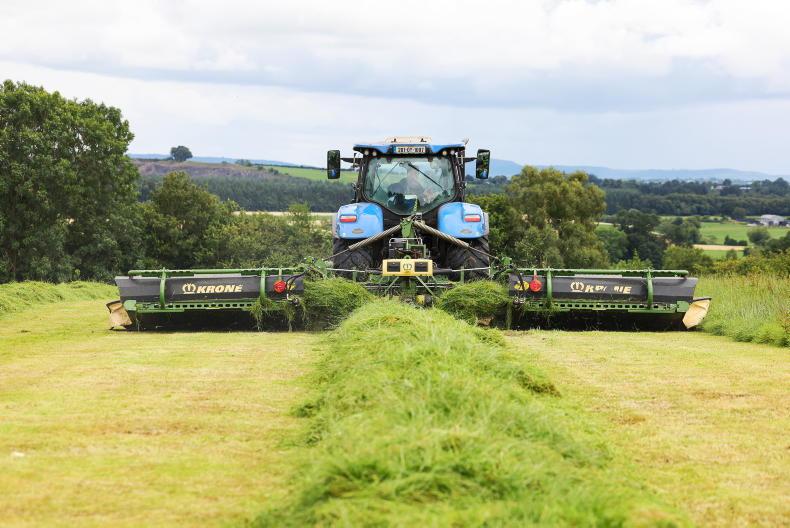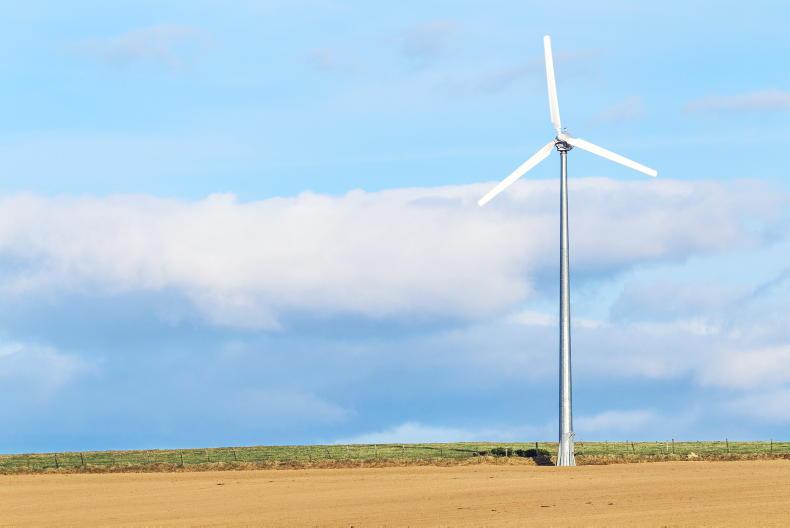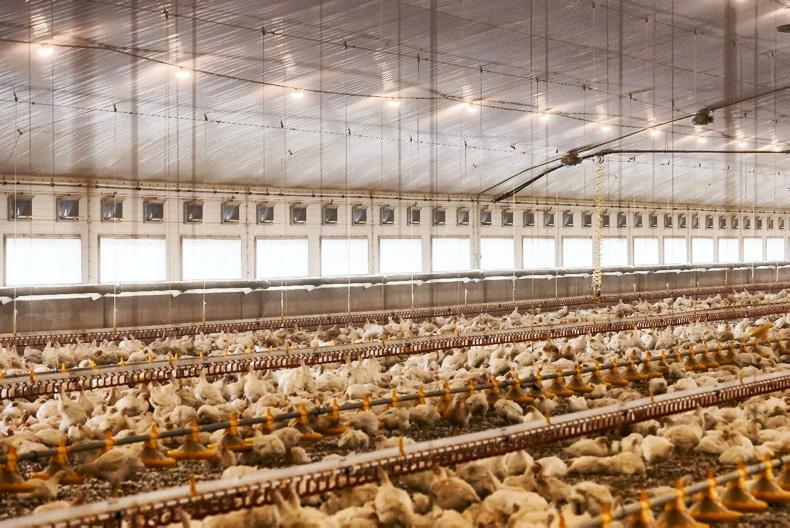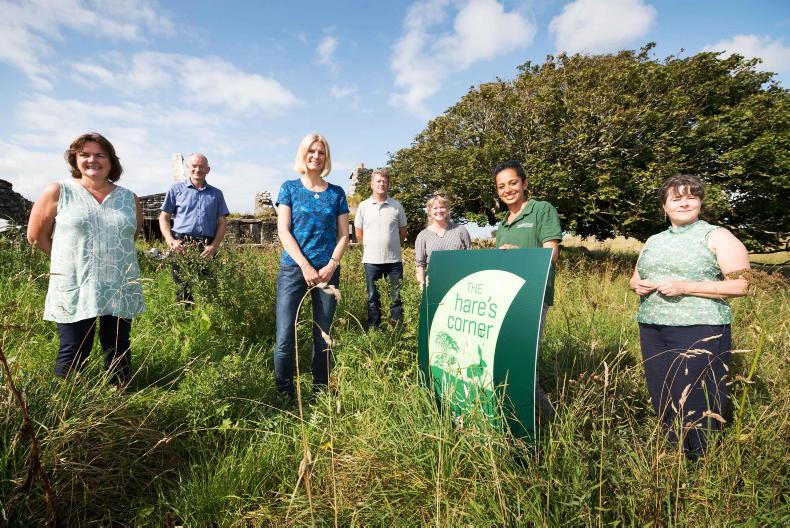Senior representatives from Moy Park, in front of the Renewable Heat Incentive (RHI) inquiry panel last week, denied that NI’s largest private sector company set out to benefit directly from the troubled green energy scheme.
The panel heard from the recently departed chief executive, Janet McCollum, along with the current head of customer support, David Mark.
McCollum, who had been CEO for five years until May 2018 told the panel that her executive team had not discussed RHI, and more specifically had not discussed that it could be financially rewarding for the company. “That conversation did not take place,” she said.
In a short 30-minute session, which could be extended when the panel reconvenes in September, McCollum pointed out that during her tenure the company had three different parents (was sold twice), so her focus was mainly on corporate governance issues. It was only in 2017/18 that she became aware that there was a “tension” between growers and management over how much Moy Park was allowing in their contract with growers for fuel used in heating sheds. She acknowledged that the issue of fuel allowance is one still to be resolved.
From the line of questioning throughout the day, it seems to be a key issue for the inquiry panel – that prior to 2016, when the fuel allowance was based on LPG heating, Moy Park covered 100% of the cost in its payment model. Once more than 50% of growers were on biomass, the allowance was changed, but not to cover the full cost of fuel. In other words, the inference is that Moy Park knew that RHI was more than compensating for the difference.
As highlighted in the evidence given by the chair of the Moy Park growers committee, Tom Forgrave, the growers wanted an allowance of 0.7t per 1,000 birds, but would have settled for 0.5t per 1,000. Instead, Moy Park had initially allowed for 0.26t which has since been revised to 0.36t. Yet it was put to David Mark that his own figures suggested that usage in Britain is 0.37t, while in NI (with a colder and wetter climate), a reasonable figure is 0.42t per 1,000.
“It was always our intention to pay one on one for heat used,” insisted Mark, who denied explicitly that he was ever involved in a discussion (within Moy Park) that RHI made up for the shortfall.
However, he acknowledged that the data set used to estimate average usage per 1,000 birds is limited, partly because growers have not been prepared to share their actual data with the company. Also, he inferred that the allowance was kept at a conservative level as Moy Park did not want to be seen to be encouraging the overuse of heat.
In some cases, he suggested that up to 1.2t of biomass per 1,000 birds might have been used. “We can’t be seen to be supporting that. We were trying to ensure that we were responsible in how we used heat,” said Mark.
Early on in the scheme, he had identified the main weakness, that without degressive payments or a cap, there was an incentive to overuse biomass pellets. But given the scheme could be policed, and creating heat just to obtain payments could be illegal, he said that Moy Park tried to make sure growers were acting responsibly.
Minor
When asked about the point made by Forgrave the week previous that the move to hot water heating (mostly powered by RHI boilers) results in improved performance (which leads to lower flesh prices for Moy Park), he insisted that the heating system had a minor part to play.
Instead, improved food conversion ratio is mainly driven by genetics, said Mark.
However, he accepted that as more growers switched to hot water heating, and average performance improved, others had to follow to remain competitive.
By the summer of 2017, out of 1,526 houses, 62% were on RHI, including the majority of broiler units.
Of the 60 houses built since then outside of RHI, the fuel source used to power the hot water heating systems is the cheaper alternative of LPG.
The RHI panel reconvenes on 4 September 2018.
Read more
RHI inquiry focus moves to Moy Park
Government consults on options to cut RHI cost
Senior representatives from Moy Park, in front of the Renewable Heat Incentive (RHI) inquiry panel last week, denied that NI’s largest private sector company set out to benefit directly from the troubled green energy scheme.
The panel heard from the recently departed chief executive, Janet McCollum, along with the current head of customer support, David Mark.
McCollum, who had been CEO for five years until May 2018 told the panel that her executive team had not discussed RHI, and more specifically had not discussed that it could be financially rewarding for the company. “That conversation did not take place,” she said.
In a short 30-minute session, which could be extended when the panel reconvenes in September, McCollum pointed out that during her tenure the company had three different parents (was sold twice), so her focus was mainly on corporate governance issues. It was only in 2017/18 that she became aware that there was a “tension” between growers and management over how much Moy Park was allowing in their contract with growers for fuel used in heating sheds. She acknowledged that the issue of fuel allowance is one still to be resolved.
From the line of questioning throughout the day, it seems to be a key issue for the inquiry panel – that prior to 2016, when the fuel allowance was based on LPG heating, Moy Park covered 100% of the cost in its payment model. Once more than 50% of growers were on biomass, the allowance was changed, but not to cover the full cost of fuel. In other words, the inference is that Moy Park knew that RHI was more than compensating for the difference.
As highlighted in the evidence given by the chair of the Moy Park growers committee, Tom Forgrave, the growers wanted an allowance of 0.7t per 1,000 birds, but would have settled for 0.5t per 1,000. Instead, Moy Park had initially allowed for 0.26t which has since been revised to 0.36t. Yet it was put to David Mark that his own figures suggested that usage in Britain is 0.37t, while in NI (with a colder and wetter climate), a reasonable figure is 0.42t per 1,000.
“It was always our intention to pay one on one for heat used,” insisted Mark, who denied explicitly that he was ever involved in a discussion (within Moy Park) that RHI made up for the shortfall.
However, he acknowledged that the data set used to estimate average usage per 1,000 birds is limited, partly because growers have not been prepared to share their actual data with the company. Also, he inferred that the allowance was kept at a conservative level as Moy Park did not want to be seen to be encouraging the overuse of heat.
In some cases, he suggested that up to 1.2t of biomass per 1,000 birds might have been used. “We can’t be seen to be supporting that. We were trying to ensure that we were responsible in how we used heat,” said Mark.
Early on in the scheme, he had identified the main weakness, that without degressive payments or a cap, there was an incentive to overuse biomass pellets. But given the scheme could be policed, and creating heat just to obtain payments could be illegal, he said that Moy Park tried to make sure growers were acting responsibly.
Minor
When asked about the point made by Forgrave the week previous that the move to hot water heating (mostly powered by RHI boilers) results in improved performance (which leads to lower flesh prices for Moy Park), he insisted that the heating system had a minor part to play.
Instead, improved food conversion ratio is mainly driven by genetics, said Mark.
However, he accepted that as more growers switched to hot water heating, and average performance improved, others had to follow to remain competitive.
By the summer of 2017, out of 1,526 houses, 62% were on RHI, including the majority of broiler units.
Of the 60 houses built since then outside of RHI, the fuel source used to power the hot water heating systems is the cheaper alternative of LPG.
The RHI panel reconvenes on 4 September 2018.
Read more
RHI inquiry focus moves to Moy Park
Government consults on options to cut RHI cost










SHARING OPTIONS